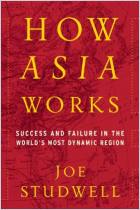Acesse a sua conta getAbstract para obter o resumo!

Acesse a sua conta getAbstract para obter o resumo!
Norman Flynn
Miracle to Meltdown in Asia
Business, Government and Society
Oxford UP, 1999
Sobre o que é?
Guangxi Gamble: Can the intricate webs of business, personal and family relationships that make up Asian economies survive globalization, and what role did these ties play in the calamities of the late 1990s?
Recommendation
Norman Flynn summarizes many arguments and viewpoints about Asia’s 1997-1998 financial crisis. Flynn, who thoroughly documents his information with examples, charts and graphs, lays out the key pre-crisis weaknesses in the Asian economies. Then, he examines ways that "expressive" personal relationships, especially among the élites, define much of Asia’s economic and political activity. He examines shifts in society, as globalization and supranational institutions (read IMF) move power from governments and élites to the markets. Flynn leans away from drawing conclusions - he prefers to present various points of view - but when he does state a conclusive opinion, he is persuasive. The book is packed with useful information, despite being short, very dense, and rather academic. getAbstract recommends this excellent book to anyone with a serious interest in investing or doing business in Asia.
Summary
About the Author
Norman Flynn is a Research Fellow at the London School of Economics. Formerly, he was Professor of Public Management at the City University of Hong Kong. He has consulting experience in China, Hong Kong and many countries in Europe.






















Comment on this summary